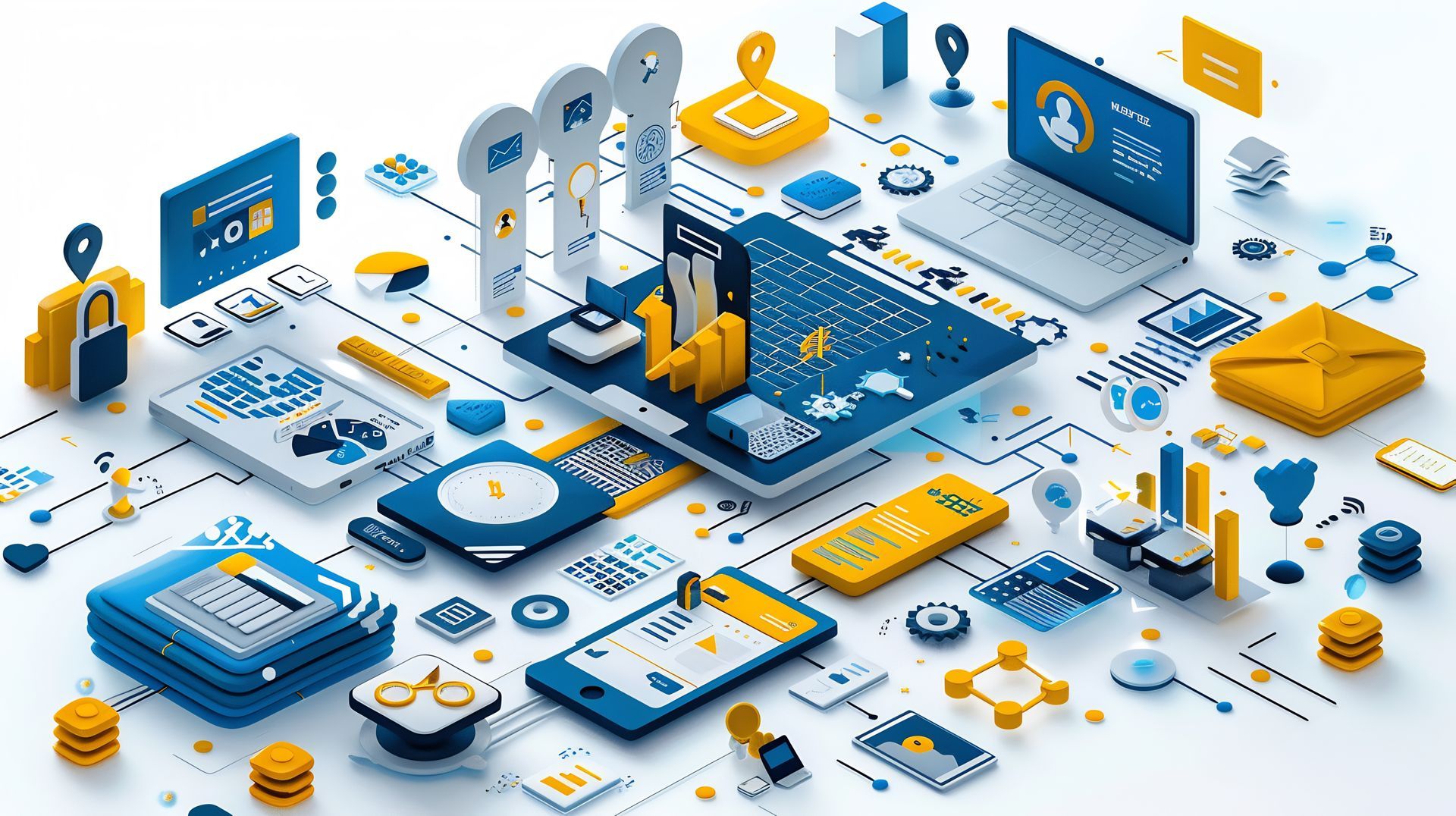How AI is Redefining Campaign Attribution in Real Time
In the increasingly fragmented digital landscape, marketers face a persistent challenge: accurately measuring the impact of their campaigns across a labyrinth of customer touchpoints. Traditional attribution models—last-click, first-touch, linear, time-decay—have long served as the cornerstone of marketing measurement. But these models are increasingly proving inadequate in a world where customer journeys zigzag across dozens of channels, devices, and moments.
Enter artificial intelligence—not as a futuristic concept, but as the present-day solution transforming how we understand marketing effectiveness. AI-powered attribution is fundamentally reshaping our ability to measure impact in real-time, creating more accurate pictures of what's working, what isn't, and what deserves the next dollar of investment.

The Broken Promise of Traditional Attribution
For years, marketers have struggled with the limitations of conventional attribution approaches. These models operate on predetermined rules that fail to capture the nuanced reality of modern customer behavior.
- Last-click attribution overvalues the final touchpoint while ignoring the crucial awareness and consideration phases
- First-touch models credit discovery channels but neglect the critical path to conversion
- Linear models distribute credit equally, regardless of actual influence
- Time-decay approaches make reasonable but ultimately arbitrary assumptions about recency
Even the more sophisticated multi-touch attribution models falter when confronting today's reality: consumers move seamlessly between owned, earned, and paid media, across multiple devices, while being influenced by offline experiences that traditional tracking can't capture.
Having worked with a global pharmaceutical company, I witnessed firsthand how their marketing teams struggled to connect the dots between their digital campaigns and in-person physician engagements. The complexity of the ecosystem made traditional attribution virtually impossible—they couldn't determine whether a physician converted because of an email campaign, a sales rep visit, or a medical conference.
The AI Attribution Revolution
Artificial intelligence—specifically machine learning and advanced analytics—is addressing these challenges through capabilities that fundamentally change what's possible.
1. Probabilistic Modeling at Scale
AI attribution leverages probabilistic modeling that can ingest vast amounts of customer journey data, identifying patterns that would remain invisible to human analysts or rule-based systems. These models generate confidence scores rather than binary attributions, acknowledging the inherent uncertainty in customer motivations.
For example, an AI system might determine that a particular social media impression had a 72% probability of influencing the final purchase, while an email touchpoint contributed only a 14% probability of impact. This nuanced view renders a far more accurate picture than simplistic rule-based attributions.
2. Adaptive Learning from Behavioral Signals
Unlike static attribution models, AI systems continuously learn from new behavioral signals. They adapt to changing customer preferences, seasonal trends, and competitive dynamics without requiring manual reconfiguration.
Key Lesson: The most valuable AI attribution systems don't just measure what happened yesterday—they evolve with your customers, becoming more accurate with each interaction they process.
3. Cross-Device Identity Resolution
One of AI's most impressive capabilities is connecting fragmented customer identities across devices and platforms. Through probabilistic matching algorithms, AI can identify when the same user moves from mobile to desktop, from social media to your website, creating a coherent view of the customer journey.
A retail client implemented an AI-powered identity resolution system that increased their ability to track cross-device customer journeys by 64%, revealing that mobile discovery followed by desktop research and purchasing was their dominant conversion path—a pattern their previous siloed analytics had completely missed.
4. Real-Time Optimization and Prediction
Perhaps the most transformative aspect of AI attribution is its shift from retrospective analysis to real-time optimization. Traditional attribution reports show what happened last week or last month. AI-powered systems predict what's happening now and what will likely happen next.
- Which customers are currently in the middle of their journey?
- Which channels are performing best in the current hour, not just the last quarter?
- How should budget be reallocated today, not after the campaign concludes?
I recently observed a financial services company utilize real-time attribution to shift advertising spend between channels four times daily based on intraday performance variations, resulting in a 28% improvement in cost-per-acquisition over their previous weekly optimization schedule.
Key AI Attribution Tools and Their Place in the MarTech Stack
The evolution of campaign attribution requires specialized tools that integrate across your MarTech ecosystem. Here's how the leading AI attribution platforms fit into the broader marketing technology landscape.
Core Attribution Platforms
1. Data Analytics & Attribution Foundations
- Amplitude: Provides real-time user journey analytics with predictive attribution models that integrate with your customer data platforms and marketing automation tools.
- Looker Studio (formerly Google Data Studio): Enables advanced segmentation and cross-channel attribution visualization, serving as the visualization layer for your attribution insights.
- Triple Whale: Specifically for e-commerce, this platform aggregates ad spend, revenue, and customer lifetime value data to provide AI-driven recommendations for budget allocation across channels.
2. Advanced Marketing Attribution Systems
- GrowthLoop: Positions itself as an end-to-end marketing platform built on data cloud infrastructure, enabling AI-driven attribution that scales with your first-party data strategy.
- Snowplow: Delivers real-time insights into customer behavior through detailed digital analytics, forming a critical component in the modern marketing data stack.
- Domo: Specializes in marketing attribution and media mix modeling, connecting disparate data sources for holistic attribution insights.
Where These Tools Fit in Your MarTech Stack
In the 2025 MarTech landscape, AI attribution tools serve as the connective tissue between various platform categories.
1. Data Layer Integration
AI attribution platforms sit between your data collection infrastructure (CDPs, CRMs, analytics tools) and your execution platforms (ad platforms, marketing automation, content management). They ingest data from:
- Customer Data Platforms (CDPs)
- Web/mobile analytics
- CRM systems
- Ad platform data
- Point-of-sale systems
- Offline conversion tracking
2. Decision Layer Functionality
These tools then feed optimized decisions into:
- Demand-side platforms (DSPs) for programmatic advertising
- Email marketing platforms
- Content personalization engines
- Social media management tools
- E-commerce platforms
3. Orchestration Layer Enhancement
At the orchestration level, AI attribution enhances:
- Customer journey orchestration tools
- Personalization platforms
- Marketing automation systems
- Campaign management platforms
The true power of AI attribution emerges when these tools are positioned as the intelligence layer of your
MarTech stack—receiving inputs from all customer touchpoints and distributing insights to execution platforms in real-time.

Implementing AI Attribution: Practical Considerations
The promise of AI-powered attribution is compelling, but implementation requires careful planning. Here are critical considerations for organizations looking to evolve their attribution approach.
Data Readiness Assessment
Before implementing AI attribution, assess your data infrastructure:
- Unified customer data: Can you connect customer interactions across channels into cohesive profiles?
- Signal quality: Are you capturing meaningful engagement signals beyond simple impressions and clicks?
- Historical depth: Do you have enough historical data to train reliable models?
- Privacy compliance: Is your data collection and usage compliant with relevant regulations?
Key Lesson: AI is only as good as the data it learns from. Organizations must invest in their data infrastructure before expecting transformative results from AI attribution.
Integration with Execution Platforms
The value of real-time attribution insights directly correlates with your ability to act on them. Your AI attribution system should integrate with:
- Advertising platforms for automated bid adjustments
- Content management systems for personalization
- CRM systems for sales enablement
- Marketing automation platforms for journey optimization
When working with an e-commerce marketplace, we discovered that reducing the lag between attribution insights and campaign adjustments from 24 hours to 30 minutes produced a 17% improvement in ROAS (Return on Ad Spend).
Human-AI Collaboration Framework
Despite its power, AI attribution should complement human intuition rather than replace it. Effective implementation requires:
- Clear interpretability of AI recommendations
- Feedback loops where marketers can validate or challenge AI insights
- Governance structures defining when AI can act autonomously versus when human approval is required
A travel industry client achieved their most successful results by establishing a "human-in-the-loop" protocol where AI made real-time budget adjustments under defined thresholds, while larger shifts required marketing team validation.
The Near Future of AI Attribution
As AI capabilities continue to advance, several emerging trends will further transform attribution.
1. Cross-Channel Incrementality Measurement
AI is enabling more sophisticated incrementality testing—measuring the true causal impact of marketing activities through controlled experiments. Rather than relying solely on correlative patterns, these approaches can determine what would have happened without specific marketing touchpoints.
2. Voice and Visual Search Attribution
As voice assistants and visual search gain prominence, AI attribution will expand to measure these emerging touchpoints. The challenge of attributing value to "Hey Siri" moments or image-based product discoveries requires sophisticated AI that can integrate these signals into the broader customer journey.
3. Privacy-Preserving Attribution
With third-party cookies disappearing and privacy regulations tightening, AI attribution must evolve to work effectively in a more privacy-centric world. Advanced techniques like federated learning and differential privacy will allow organizations to gain attribution insights while respecting user privacy.
4. Emotional Response Attribution
The next frontier involves measuring not just what customers do but how they feel. AI systems that analyze sentiment signals from customer interactions can attribute emotional responses to specific touchpoints, adding a crucial dimension to effectiveness measurement.
From Measurement to Meaning
The evolution from traditional to AI-powered attribution represents more than a technical upgrade—it's a shift from measuring marketing to understanding customers. By capturing the complex, non-linear reality of how people discover, evaluate, and choose products and services, AI attribution delivers something more valuable than accurate metrics: it delivers meaning.
For marketing leaders, the imperative is clear. The organizations that thrive will be those that transcend the limitations of conventional attribution, embracing AI not just as a measurement tool but as a strategic advantage that connects marketing investments to business outcomes with unprecedented clarity and speed.
The future of attribution isn't just about knowing what worked—it's about understanding why it worked, for whom it worked, and how to make it work better next time. And in that future, AI isn't just part of the solution—it's the only way forward.
Disclaimer: The platforms and tools mentioned in this article (including Amplitude, Looker Studio, Triple Whale, GrowthLoop, Snowplow, and Domo) are included based on industry research and professional experience. I have no financial relationship, partnership, or affiliation with any of these companies, nor do I receive any compensation for mentioning them. All references are provided solely as informational examples for readers considering AI attribution solutions.
How can companies with limited data science resources implement AI-driven attribution?
Organizations without extensive internal data science capabilities have several options. Start by evaluating marketing analytics platforms that offer built-in AI attribution capabilities. These platforms provide pre-built models that can be customized to your business context without requiring you to build from scratch. Additionally, consider a phased approach: begin with a specific channel or campaign to demonstrate value before expanding to your entire marketing ecosystem.
Many companies are finding success with hybrid solutions that combine out-of-the-box AI capabilities with targeted consulting to adapt models to their specific business needs. The key is starting with a clear business question rather than implementing AI for its own sake.
How does AI attribution handle the challenge of online-to-offline customer journeys?
AI excels at connecting online signals to offline outcomes through advanced techniques including:
Location data analysis to connect digital impressions with store visits
QR code and coupon integrations that bridge digital and physical experiences
Point-of-sale data integration to connect transaction data with digital profiles
Controlled geo-experiments that measure lift in physical locations after digital campaigns
The most sophisticated systems combine these signals with machine learning to build probabilistic models of how online activities influence offline behaviors. While perfect measurement remains challenging, AI can identify patterns and correlations that traditional methods miss entirely. Leading retailers are now able to attribute in-store purchases to specific digital touchpoints with up to 70% confidence—a dramatic improvement over the previous inability to make these connections at all.
What organizational changes are required to maximize the value of AI attribution?
Successful AI attribution implementation typically requires three key organizational adaptations:
- Cross-functional data governance: Establish clear ownership and quality standards for the data that feeds your attribution models
- Agile marketing processes: Create workflows that can respond to real-time insights rather than monthly reporting cycles
- Attribution-informed incentives: Align team KPIs with attribution insights rather than channel-specific metrics that encourage siloed thinking
The most critical shift is cultural—moving from a reporting mindset ("what happened?") to a predictive orientation ("what should we do next?"). Organizations that train their teams to be curious about attribution insights rather than defensive about their channel's performance see substantially better results from their AI investments.
Consider implementing cross-functional "insight teams" that bring together channel specialists to collectively interpret and act on attribution findings. Companies that create these collaborative structures report 40% higher ROI from their attribution investments compared to those that maintain traditional siloed structures.
Author: William Flaiz










